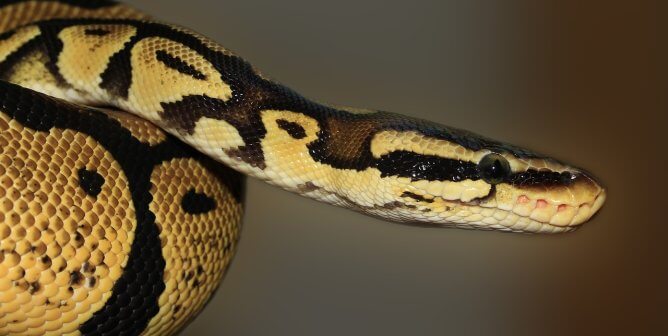In April 2012, PETA released a 15-month undercover investigation—spanning five states—into some of the largest pigeon-racing operations in the U.S. Read more about the findings of our investigation.
Training and Racing
Pigeon racers start training young birds by having them fly around outside their home lofts to familiarize them with the location. They then place the birds in crates and drive them away from home to release them for “training tosses,” first close to home and then farther and farther. For a race, the birds are driven as many as 600 miles from their home to see if they are able to make it back faster than other birds. Released first thing in the morning, they fly out of desperation to get back to their mates and their eggs or hatchlings. When they return, sensors scan the radio-frequency identification chips in their leg bands and record their times on electronic race clocks. Their speeds are calculated based on the distance from the race release point to the racers’ lofts, and the race results are sorted by average speed. The fastest birds win prize money.
“Young-bird” races (for birds under 1 year old) generally offer more prize money than “old-bird” races (for birds over 1 year old), especially high-stakes races that may pay out hundreds of thousands of dollars in capital prizes. One race in South Africa attracts entrants from all around the world for its $1 million in prize money.
Gambling
PETA investigators documented several races in which more than $200,000 was wagered. At the 2011 American Racing Pigeon Union (AU) Convention Race in Phoenix, Arizona, nearly $275,000 was illegally bet on the race, including more than $54,000 from pooling and Calcutta auctions.
In the U.S., pigeon races come in two basic varieties, the club race and the one-loft race. In a club race, pigeon racers from a particular geographical area take their birds to a central location for “shipping night,” where the birds are registered, put in crates, and loaded onto a truck. Once the birds are registered, the racers can proceed to the pooling area to pay for their wagers and participate in Calcutta auctions. On race day, participants wait at their home lofts for the birds to arrive, and that evening, racers unhook their race clocks and bring them to their pigeon clubs to have their results printed and validated.
For one-loft races, pigeon racers mail baby pigeons (through the U.S. Postal Service!) to a host loft or lofts, where the birds are raised and trained in a central location. On shipping night, all the racers who have traveled to the race—some from as far away as Canada and Europe—congregate to look at the birds they haven’t seen in months; some use this opportunity to evaluate the birds’ condition in order to figure out how much to wager. Racers can then place wagers on the pigeons. Participants who do not attend the race can mail in their bets ahead of time. The release works the same as with the club races, except that the birds fly back to one location.
Racing for Their Lives
Many birds die when they are forced to race through storms, fly into power lines, or are shot by hunters or attacked by predators, such as hawks, while returning to their lofts. During the races, pigeons can end up off course and become lost when trying to avoid foul weather or simply from following a river, mountain range, highway, or railroad track that leads away from home. This can make the birds so exhausted that they are unable to fly any farther. If they must land because of injury, exhaustion, or inclement weather, they may drink contaminated water or even starve to death because they were born in captivity and are unable to find food in the wild. Some races take place over oceans, where landing means certain death.
Pigeon racers have a whole vocabulary to describe races with especially deadly outcomes: a race that kills most birds is called a “smash race,” and one in which no birds arrive back on the day they were released is said to have “no day birds.”
PETA’s investigators attended three major young-bird races organized by the Bronx Homing Pigeon Club and found the following:
- Of the 1,294 pigeons released from Clarksburg, West Virginia, for the October 9, 2010, World Trade Center Memorial (WTCM) Race, only 293 birds reportedly made it back by nightfall.
- In the 2011 WTCM Race, 1,210 pigeons were released from Belmont, Ohio, and only 191 arrived back home by nightfall.
- On October 23, 2010, PETA investigators documented the release of pigeons in Clarksburg, West Virginia, for the Carl’s Main Event Race. Drivers hauled 556 birds about 350 miles, kept them overnight in freezing temperatures, and released them to make the long journey back to their home lofts. Only 233 birds made it home by nightfall.
PETA’s investigators also learned of a race in New Jersey in which only 41 birds out of 769 released had returned within two days and a race in Queens, New York, in which only four out of 213 birds made it home.
The investigators also attended two major one-loft races:
- At the 2010 AU Convention Race, out of more than 1,500 baby birds shipped to Oklahoma City for training, only 1,044 survived to race day. Of the 1,044 surviving birds released in Conway, Arkansas, for the race, only 420 made it back to Oklahoma City by nightfall. The 2010 AU Convention Youth Race had even more dismal numbers: Of the 139 birds registered, only 52 lived through training, and only 35 birds made it home.
- At the 2011 AU Convention Race, out of 2,294 baby birds shipped to the Phoenix area for training, only 827 survived to race day. Of the 827 surviving birds released near Daggett, California, for the race, only 487 made it back to Phoenix by nightfall. The 2011 AU Convention Youth Race again had even more dismal numbers: Of the 106 birds registered, only 17 lived through training, and only eight birds made it home by nightfall.
Motivational Techniques
High stakes mean that some racers will do anything to win. Techniques used to make pigeons fly home faster include psychological, emotional, and physical manipulation, such as the following:
- Administering performance-enhancing drugs, including the anabolic steroid boldenone, cocaine, and morphine
- Separating life mates before the race, showing a male his mate with another male, and keeping them away from their mates except for a brief period before the race before separating them again (the “widowhood” system)
- Using eggs to fool a bird into thinking that he or she is incubating soon-to-hatch babies (pigeon racers may place other birds’ eggs in the nest or use plastic eggs into which the pigeon racer inserts a worm or a bug to make the egg move in hopes of tricking them into believing hatching is imminent), which makes the pigeons panic and try to get back to their eggs
- Using babies to get parents to fly home faster: Racers will purposely choose to race pigeons who have young babies in the nest or even breed babies late in the season when they will be too young for the young-bird races, just to use them as motivation for the parents. These late-season babies are then killed.
- Using the “dark system,” which involves keeping birds in the dark for long periods of the day to retard the molting of their flight feathers
- Depriving the pigeons of adequate food before a race: Pigeons are kept hungry enough to want to get home but not too hungry to fly.
Many of these techniques are only possible because they exploit pigeons’ loyalty to their mates and dedication to their young.
Culling
PETA’s investigators learned that culling (killing) is a standard method of making sure that only the birds with the fastest performances and “best” bloodlines are kept to live into their second year. Pigeon racers usually maintain a breeding loft and a racing loft. Because of the potential for severe losses during training and races and the fact that not all young birds will turn out to be fast racers, pigeon racers breed many, many more birds than they plan to keep. Some young birds are kept to race as “old birds,” and a few of the best may be placed in the breeding loft, but many birds are culled, either during the season or at the end of the autumn young-bird racing season. Culling methods include breaking or wringing their necks, suffocation, gassing, pulling their heads off, drowning, and selling them to live poultry markets.
Pigeon racers treat homing pigeons like disposable objects because they can always breed or buy more birds.
Andre Roodhooft, a pigeon-racing “expert” from Belgium, delivered a lecture at the 2010 AU Convention emphasizing the need for severe culling, even of expensive birds purchased for breeding, to enhance the success of the loft. He said he only keeps one out of every 12 pigeons he buys for breeding and kills the others (and all their offspring) if they aren’t as “good” as his old pigeons.
Two racers from Canada told PETA’s investigators that when beginning in pigeon racing, “The first thing you have to learn—how to kill pigeons. And if you cannot do this, you’re never going to be a good flyer .… If they fly and they don’t produce, you have to get rid of them.”
Read more about the findings of our investigation, and please take a stand for the birds abused by the barbaric “sport” of pigeon-racing by urging Chiang Wen-Chuan, head of the Animal Protection Division in Taiwan’s Council of Agriculture, to prosecute any violation of the country’s Animal Protection Act in deadly ocean pigeon races.





